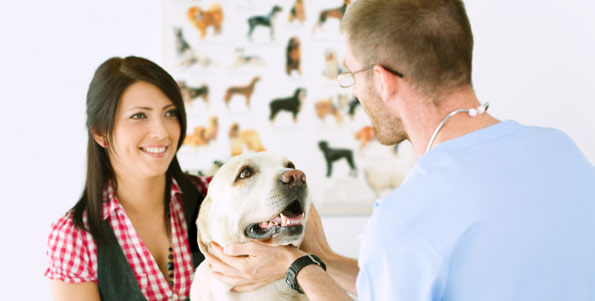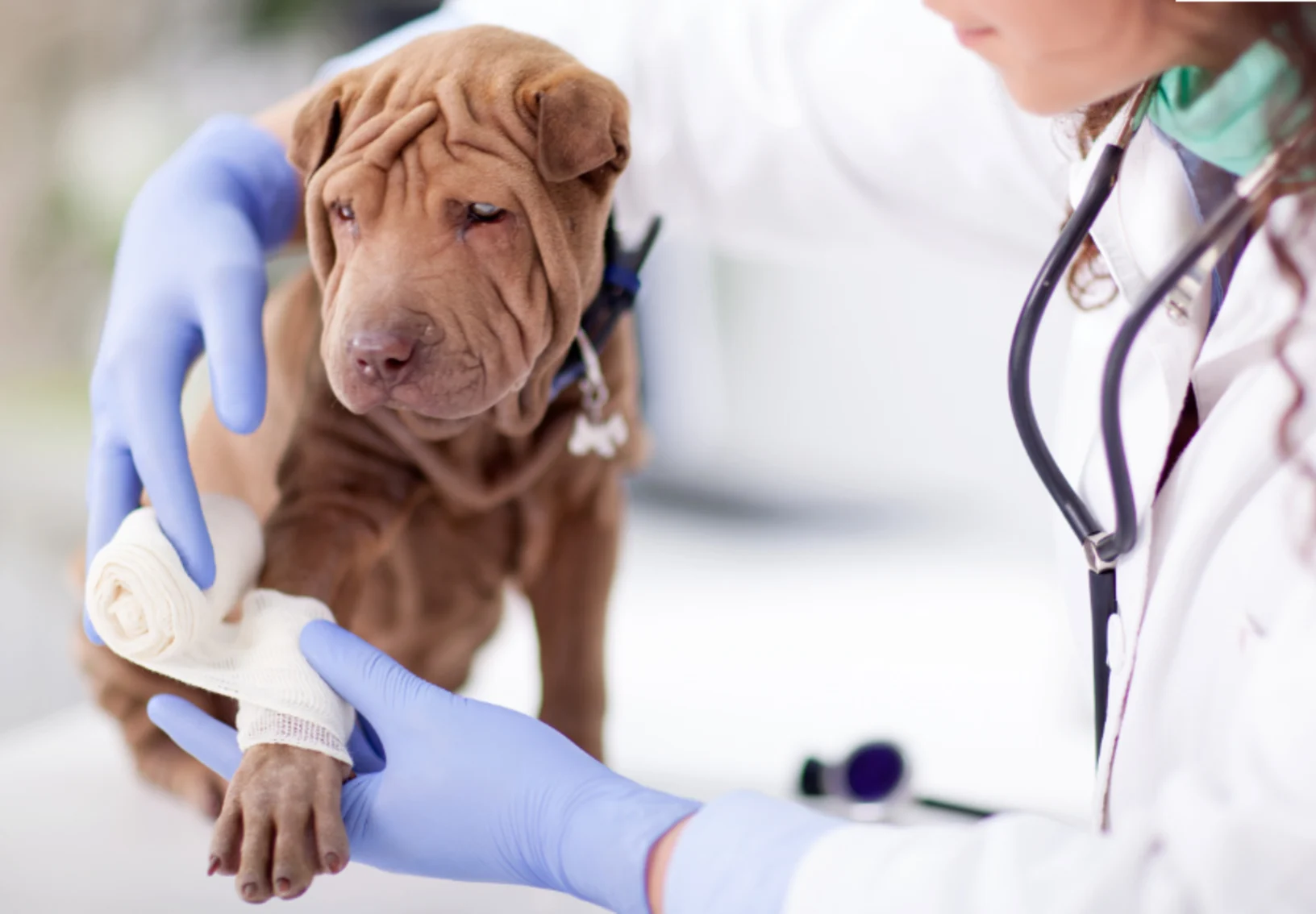Top 5 Life-Threatening Pet Issues That Require an Immediate emergency vet Visit
Wiki Article
Why Pet Rehab Is Crucial: the Benefits of Veterinarian Providers for Your Pet's Recuperation
Animal rehabilitation is a crucial part of recovery for family pets facing injuries or impairments. Vet solutions offer important assistance through tailored rehab plans that attend to individual requirements. These strategies frequently consist of pain monitoring, physical treatment, and dietary advice. Understanding the numerous aspects of animal rehab can illuminate its significance in improving recuperation end results. What specific advantages do these solutions provide, and just how can they change a pet dog's healing journey?Understanding Animal Rehab
Animal recovery incorporates a series of restorative practices targeted at restoring the health and wellness and functionality of damaged or impaired animals. This area incorporates various strategies, including physical treatment, hydrotherapy, and work-related treatment, tailored to satisfy the certain requirements of each pet. Rehab experts examine an animal's problem, developing personalized treatment plans that may entail exercises to strengthen muscular tissues, enhance mobility, and boost general wellness. The process not only focuses on physical recuperation yet likewise addresses psychological and behavioral aspects. Animals commonly experience stress and anxiety following an injury, making psychological health and wellness factors to consider necessary in rehab. By developing an encouraging setting, specialists can aid pets regain their confidence and adapt to their new circumstances. With regular sessions, pets can experience considerable improvements, ultimately causing a far better lifestyle. In general, recognizing pet rehab highlights its value in promoting healing and boosting the bond in between family pets and their owners.
The Duty of Pain Monitoring in Recovery
How important is reliable discomfort monitoring in the recuperation of injured animals? It plays an important duty in facilitating healing and enhancing the overall health of pets. Correct discomfort monitoring not only relieves discomfort however likewise promotes movement, making it possible for animals to join recovery activities needed for healing. When pain is efficiently taken care of, animals have a tendency to react positively to treatment, causing quicker rehabilitation outcomes.Veterinarians utilize various approaches to assess and address discomfort, including medications, acupuncture, and alternate therapies. By tailoring discomfort monitoring approaches to the private demands of each animal, vets can ensure that animals continue to be tranquil and participating throughout their healing trip. Reducing discomfort helps lower anxiety, which can prevent healing and lengthen recovery times. To sum up, efficient pain monitoring is crucial for enhancing the recuperation process and enhancing the high quality of life for injured animals.Physical Therapy Strategies for Family Pets
Countless physical therapy techniques are available to help in the rehabilitation of pet dogs recovering from injuries or surgical procedures (animal emergency care bellingham). These methods can improve flexibility, ease discomfort, and promote recovery. Restorative exercises, for example, aid reinforce muscles and enhance joint feature, permitting pets to restore their physical capabilities progressively. Hands-on treatment, that includes massage therapy and mobilization, can ease stress and improve blood circulation, adding to a faster recovery.Other strategies such as easy array of movement workouts urge joint versatility and reduce stiffness. Additionally, electrical excitement treatment might be used to boost nerves and muscle mass, promoting recovery and discomfort relief.Veterinary professionals frequently tailor these methods per family pet's specific needs, ensuring a thorough rehab plan. By carrying out these physical therapy methods, pet dogs can experience enhanced lifestyle and a much more effective recovery from their conditions. The assimilation of these techniques into rehab programs is essential for optimal recovery end resultsAdvantages of Hydrotherapy for Rehabilitation
Hydrotherapy uses considerable advantages in animal recovery, especially in boosting movement. This water-based therapy promotes discomfort relief while supplying convenience to injured or recovering pet dogs. Furthermore, it assists in strength-building exercises that add to general physical recovery.Improved Movement Enhancement
As animals recuperate from injuries or surgical treatments, improved movement often ends up being a main goal of their rehab. Hydrotherapy functions as a beneficial tool in accomplishing this goal. With water-based exercises, animals can take part in low-impact motions that promote joint flexibility and reinforce muscles without the stress of weight-bearing tasks. The buoyancy of water sustains their bodies, permitting increased variety of movement and wheelchair renovation. In addition, hydrotherapy urges better balance and coordination, which are essential for bring back regular movement patterns. Regular sessions can lead to considerable progression in an animal's physical abilities, inevitably enhancing their lifestyle. This approach not just help in recuperation however likewise advertises a more energetic and meeting lifestyle post-rehabilitation.Pain Relief and Comfort

Relief from discomfort is a crucial element of pet rehab, and hydrotherapy considerably contributes to this process. By utilizing water's buoyancy, hydrotherapy decreases joint anxiety and relieves discomfort throughout motion. This therapeutic approach supplies a comforting setting where pet dogs can participate in gentle exercises without the full weight of their bodies influencing their recovery. The cozy water boosts blood circulation, advertising healing while likewise encouraging leisure. In addition, hydrotherapy sessions can be customized to satisfy the certain requirements of the pet, ensuring optimal convenience. As pet dogs experience decreased discomfort and raised convenience degrees, their total desire to get involved in rehabilitation activities commonly boosts, causing an extra efficient healing trip. Hydrotherapy serves as an essential device in boosting discomfort relief and convenience during rehab.
Toughness Building Workouts
Strength-building exercises play a vital function in the recovery process, with hydrotherapy offering special advantages. This type of treatment uses water resistance to improve muscular tissue stamina without putting excessive pressure on the joints. The buoyancy of water supports the pet's weight, permitting much safer motion and enhanced variety of movement. Furthermore, hydrotherapy can enhance cardio health and wellness and promote total physical fitness, aiding in quicker recuperation from injuries or surgical procedures. The regulated atmosphere also lessens the threat of reinjury, making it an excellent option for family pets needing rehabilitation. Normal hydrotherapy sessions can lead to visible renovations in flexibility, toughness, and endurance, inevitably enhancing the pet dog's lifestyle and capability to return to normal activities.Relevance of Custom-made Rehabilitation Strategies
Customized rehab plans are necessary for resolving the distinct demands of each pet, making certain customized therapy techniques. These plans permit for reliable progress tracking and essential modifications, promoting suitable recovery end results. Additionally, a holistic strategy can improve the overall well-being of the animal, promoting a more comprehensive rehabilitation experience.Individualized Treatment Approaches
While numerous rehabilitation programs embrace a one-size-fits-all strategy, the special demands of each pet require individualized treatment plans for suitable recovery. Personalized rehabilitation strategies take into consideration numerous aspects, consisting of the animal's varieties, age, clinical history, and specific injuries or problems. By tailoring treatments, veterinarians can address each family pet's one-of-a-kind obstacles, taking full advantage of the efficiency of the rehab procedure. Embellished plans may include different techniques such as physical treatment, hydrotherapy, and therapeutic workouts, making sure that the therapy lines up with the pet's abilities and development. Additionally, individualized strategies cultivate a stronger bond in between the family pet and the caregiver, advertising a more interesting and encouraging healing environment. Inevitably, customized therapy is vital for attaining best possible end results in animal recovery.Progress Monitoring and Adjustments

Holistic Healing Strategies
Alternative recuperation techniques are vital for efficient animal rehabilitation, as they emphasize the significance of individualized therapy strategies tailored to each pet's certain demands. This technique thinks about the physical, emotional, and ecological variables affecting healing. Custom-made rehab strategies might include a combination of physical treatment, dietary therapy, and behavioral adjustments. By dealing with these varied aspects, veterinarians can boost the overall wellness of the pet and advertise a faster recuperation. Furthermore, such customized approaches promote a much deeper understanding of the pet's distinct challenges, leading to more efficient interventions. Ultimately, holistic recovery techniques not just boost physical health and wellness however additionally add to the pet's mental and emotional security, making sure a detailed rehabilitation experience.The Impact of Nutrition on Healing
Nutrition plays an essential duty in the recuperation procedure for restoring pets, frequently establishing the rate get more info and efficiency of healing. A healthy diet provides the required nutrients that sustain cells repair, boost the immune system, and boost overall vitality. Healthy protein is particularly essential, as it aids in muscular tissue restoring and recuperation from injuries. Vital fats, vitamins, and minerals likewise add to reducing inflammation and advertising optimum mobile function.Veterinarians frequently emphasize the significance of tailored nutrition strategies, thinking about each animal's specific demands, age, and health status. Correct hydration is just as vital, as liquids promote nutrient absorption and help in detoxification. By guaranteeing that pets receive ideal nourishment, caregivers can significantly improve their possibilities of an effective healing, resulting in much better long-term health and wellness end results. Ultimately, nutrition serves as a foundational component in the recovery trip, sustaining animals in gaining back strength and strength post-injury or illness.Success Stories: Family Pets That Grew After Rehab
Effective rehab stories abound, showcasing the durability of animals who have actually conquered substantial challenges. Take, for circumstances, Bella, a golden retriever who suffered severe injuries from a vehicle accident. With committed veterinary care and an extensive recovery program, she regained her flexibility and went back to her lively self, much to her owner's joy. Max, an elderly pet cat diagnosed with joint inflammation, experienced amazing improvement via a combination of physical therapy and pain monitoring. His newly found dexterity permitted him to appreciate his favored sunbathing areas again. An additional motivating instance is that of Coco, a rescued greyhound who got over anxiousness through therapy and socializing techniques, allowing her to thrive in her new home. These success tales exhibit the transformative power of pet recovery, stressing that with the best assistance, pet dogs can not just recuperate yet lead fulfilling lives, enriching the bonds they share with their family members.Regularly Asked Concerns
How much time Does the Rehabilitation Process Typically Take for Family Pets?
The rehabilitation procedure for pets normally differs based on the injury or condition, ranging from a few weeks to a number of months. Private progress, therapy kind, and commitment to exercises considerably affect the overall duration of recuperation.Exist Any Threats Related To Pet Rehabilitation?
Pet rehabilitation may carry risks such as worsening of injuries, inappropriate techniques leading to pain, or inadequate surveillance during healing. These elements can prevent progression and impact the total efficiency of the recovery procedure.
Can All Pets Gain From Rehabilitation Providers?
Not all pets might need recovery, yet several can profit substantially. Recovery services can boost movement, reduce pain, and improve general health, particularly for those recuperating from injuries, surgeries, or persistent conditions.Exactly How Can I Prepare My Animal for Rehab Procedure?

What Indications Show My Pet Needs Recovery?
Indicators showing an animal might require rehabilitation include trouble strolling, hopping, decreased activity levels, unwillingness to leap, or indications of discomfort. Observing these behaviors can trigger owners to seek specialist analysis and treatment for their animals.Report this wiki page